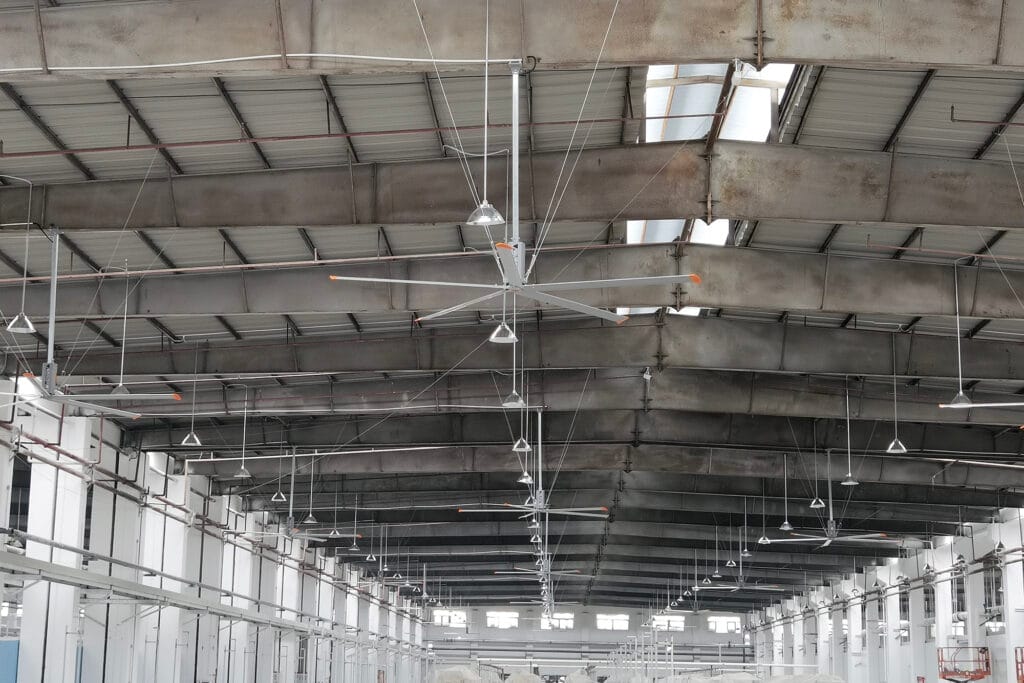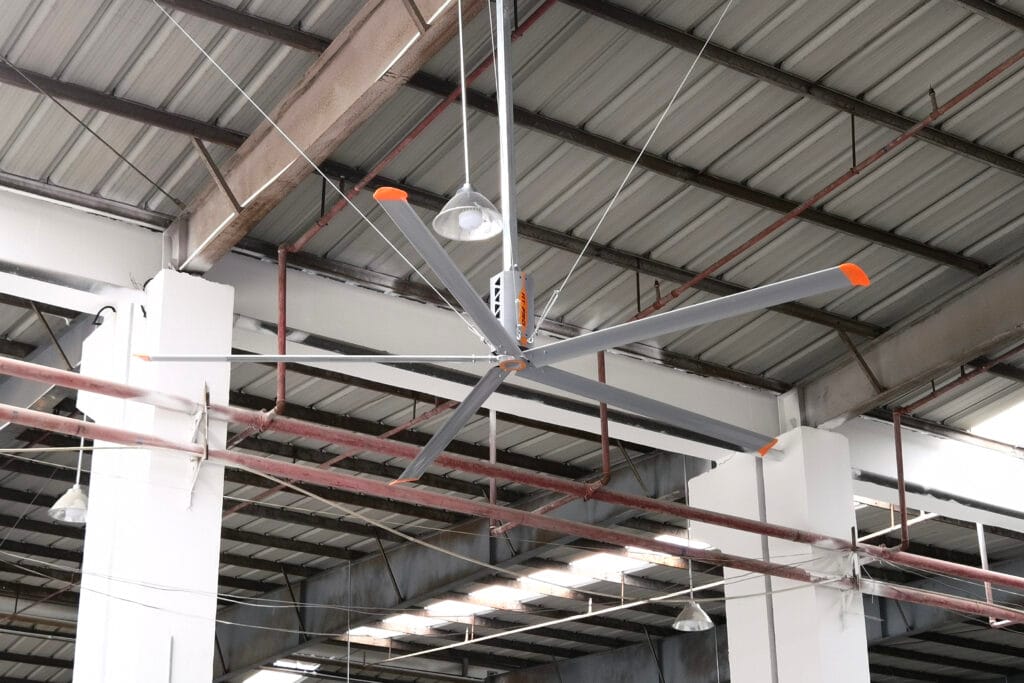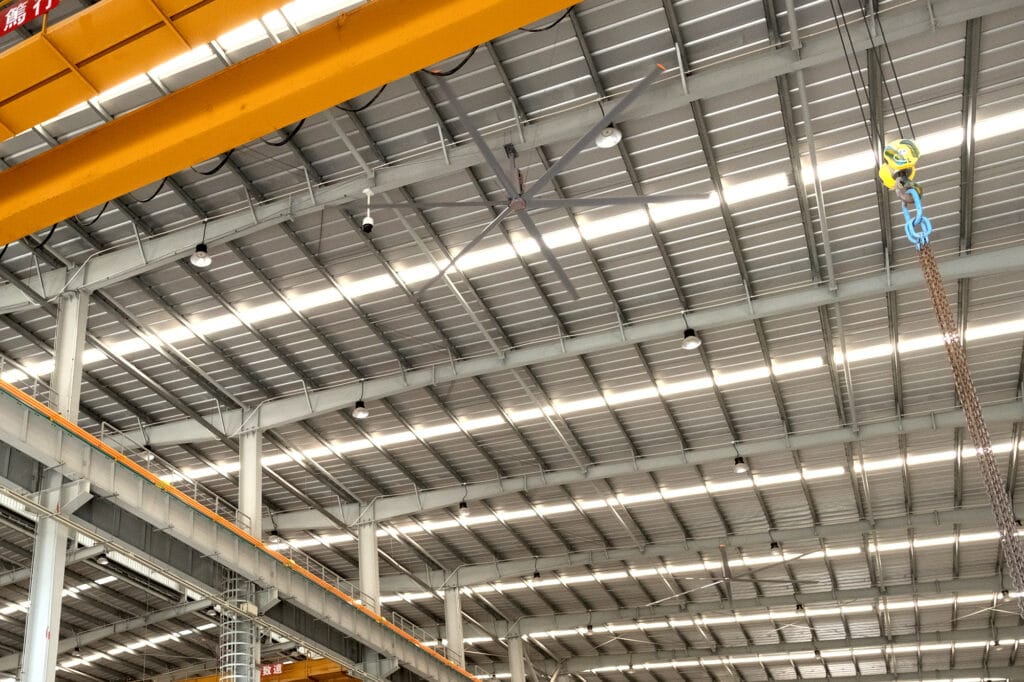One of the qualities of attracting and retaining customers in restaurants is that the environment is supposed to be comfortable, and the ventilation must also be suitable so that the atmosphere is favorable and the air is of high quality. High-Volume Low-Speed (HVLS) ceiling fans and other ceiling fans are strong products that allow for to movement of air, save energy expenses, and allow people to enjoy their meals. Nevertheless, selecting the wrong fans might cause wastage, inconvenience, and expenditure. Making expensive decisions is thus the most common trap of most restaurant owners who choose the best type of industrial fans for restaurants. This restaurant fan buying guide is an identification of five common traps in making the mistake of choosing ceiling fans in a restaurant and the expert advice on how to avoid these pitfalls.
RTFANS has more than two decades of experience in ventilation solutions, and its work has benefited numerous restaurants to streamline their settings. In this article, you will find practical advice to make sure that your choice of fans resonates with operational and customer requirements and helps save money and time.
Common Mistakes and How to Avoid Them
Below are five pitfalls when selecting restaurant ceiling fans and the corrective action to take in order to make sure that you are selecting the best industrial fans in restaurants.

1. Choosing the Wrong Fan Size for the Space
Mistake: The most frequent mistake is to select the fans that are either not big enough or are too large to be installed in the restaurant dining place. Dining establishments are broadly ceiling high (10-20 feet) and open floor plan, and hence large area fans are necessary. A small fan will not be able to circulate the air in large spaces, hence there will be hot spots or stuffy spaces, but a large fan will have too much draft and may disturb the diners.
Impact: A 4-foot fan had the ability to cool only 1000 square feet out of a 5000 square-foot dining hall, and the rest would not be cooled. The outcome is unbalanced temperatures, grievances, and a load-induced HVAC system, increasing energy costs by 10-15 percent.
Fix: Re-calculating the size of the restaurant in square feet and recalculating the size of the ceiling to accommodate the size of the fan. HVLS fan has a diameter of 8-24 feet, and it can serve a maximum of 22,000 square feet per fan and are most appropriate to large dining areas. As recommended by industry, a 12-foot container makes 3000-6000 square feet, and a 20-foot container makes 10000-15000 square feet. Calculate AMCA (Air Movement and Control Association) or another reputable supplier, e.g., RTFANS airflow calculators, to ensure it is correctly sized. A good illustration is a 4,000-sq-ft bistro, which fitted two 12-ft HVLS fans, which at 20 percent reduction in total HVAC expenses produced an equal circulation of air within the area.
Ignoring Noise Levels
Mistake: What must always be kept in mind is that the amount of noise made by the ceiling fans should not be ignored, since this can spoil the dining experience. Dining out places require not too much noise level of conversation and atmosphere, but in some kinds, especially those that are small and have high-speed fans, produce noises of up to 45-60 dB that are loud enough to drown out music or conversation.
Effects: Noise issues irritate the customers in such a way that they do not stay long or frequent as often. In a fine-dining restaurant, the loud fans led to a loss of customer satisfaction by 10 percent, which influenced reviews and revenues.
Remedy: Low noise fans (less than 35 dB) should be used. The velocity of HVLS is low (50-100 RPM), and it does not bother individuals in their eating halls. Specifications of check maker decibel ratings, purchase models that have noise-reducing features like aerodynamic blades. A casual restaurant chain has transformed high-speed fans into high-velocity ones and decreased the rate of noise to 32 dB, making people more satisfied (the level of customer satisfaction increased by 15%). This ensures that the ventilation solutions of the restaurant do not put the restaurant in a bad light.

Overlooking Energy Efficiency
Mistake: Failure to specialize in energy-saving fans increases the cost of operation. HVAC consumes 25-40% of restaurant energy, and inefficient fans only aggravate the situation because they consume more energy or fail to reduce the HVAC load. Other owners like cheaper and less efficient models since they believe that the first cost is more significant than the long-run cost.
Impact: Inefficient fans can push the electricity bills up to $50-100/month/unit, and in the event that more than one unit is required. The energy bills were 15 percent higher for a 6,000-square-foot restaurant using the old fans since there was no HVAC synergy.
Solution: Select the energy-saving ceiling fans restaurant solutions, such as HVLS fans and which consume less than 1.5 kW and use 20-30% less electricity on HVAC. Use ENERGY STAR-certified or AMCA certified to make sure you have efficiency. Thermostat controls can be adjusted to 3-5 degrees higher than normal during the summer, with HVLS fans, which saves 4 per cent of the energy used per degree during the summer, and warm air is recycled during the winter, which saves on the thermostat heating costs. A medium-sized restaurant saved an amount of money to the tune of three thousand dollars a year in 18 months using two HVLS fans. This complies with other sustainability standards like the ISO 50001, which reduces carbon footprints.
Poor Fan Placement
Fault: The faulty fitting of fans leads to poor air circulation and loss of money and time. Fans are mounted in front of a chandelier or a wall, which is less space than in other restaurants. People put the wrong number of fans, believing that, with a large space, one unit will be enough, or they set too many of them, which will result in the appearance of turbulent airflow.
Effect: poor location results in hot spots or drafts, which irritate diners. One of the restaurants with a single fan in an inappropriate location was a rooftop restaurant, in which customers were complaining that the restaurant was hot and not turning over.
Solution: Figure out and engineer the placement of fans. Install the position HVLS fans on the open eating places that are 2-3 times apart in terms of diameter. The area (5,000 square feet) will be covered by two 12-foot fans that will be located in the center of the tables. Do not use obstructions like beams or decor, and consult a professional in the process of simulating the airflow. A family restaurant has corrected the mistake made in positioning through repositioning three HVLS fans to improve the airflow within the dining premises and improve the comfort of customers by 20 percent. This will give the ideal production of ideal industrial fans in restaurants.
Skipping Professional Installation
Error: In order to save some money, one may decide to install the fans by him/herself or hire an incompetent maintenance crew. This may result in poor performance of the fan and accidents as well. High ceiling restaurants require stable mounting and electrical skills, and the misplaced installation may be unstable, or may cause low air circulation, or may be hazardous.
Effects: Once it is broken, the fans might wobble, hence their life span is likely to be reduced or lead to accidents, and this is not in line with safety codes. The self-installed fan caused a failure in one of the cafes, which forced the cafe to pay a repair fee of 5,000 dollars as the self-installed fan escaped and caused the operation of the cafe to stop, endangering the lives of the customers.
Solution: Outsource the service of a reputable contractor who has been in the installation of ceiling fans in churches or restaurants. Ensure that the fan weight (100-200 lbs) is mounted on the mounts, and it must be installed in compliance with the local codes. Professional installers use HVAC controls with fans to offer optimum efficiency. A chain restaurant invested in four HVLS fan professional installations, which would be compliant with UL/ETL standards and would lead to a 25 percent savings on the energy cost. This will ensure that your investment is safe and the restaurant fan buying guide is successful.

Solutions to Ensure the Right Fan Choice
To prevent all these errors when selecting restaurant ceiling fans, follow this restaurant fan buying guide:
- Assess Space Needs: Square footage and ceiling height. Incorporate HVLS in rooms more than 3,000 square feet with a ceiling greater than 10 feet.
- Prioritize Quiet Operation: Select fans below 35 dB, such as HVLS models, to sustain ambiance.
- Focus on Efficiency: Choose ENERGY STAR qualified or AMCA certified fans to save 20-30% on the costs of HVAC.
- Plan Strategic Placement: Collaborate with professionals to place fans in the most optimal spots to prevent any obstruction.
- Invest in Professional Installation: Customers should be able to hire certified professionals who will guarantee safety and performance and integrate with HVACs.
An illustrative case is the 4,000-square-foot bistro that has successfully avoided these errors by enlisting the help of a ventilation specialist to install two 16-foot HVLS fans professionally. The result? 25% reduction in energy costs (2,900/year), better customer experience, and ROI in 25 months.
Conclusion
When choosing the right ceiling fans, much importance is given to the restaurants where comfort, efficiency, and cost are the desired objectives. Through evading the traps of having the wrong ceiling fan in the restaurant, such as improper sizing, not taking into account the noise or efficiency, improper location, poor positioning, and not having professional installation, the maximum performance will be realized. This restaurant owner’s buying guide enables restaurant owners to know the right industrial restaurant fans that maximize the restaurant food experience and minimize costs.
Make sure that costly errors do not compromise the performance of your restaurant. RTFANS is a company with a history of serving your ventilation needs for 20 years and above, offering custom HVLS. Get on the phone and talk to our specialists and choose the perfect fans to fit in your dining room- your customers and your wallet will love it.
